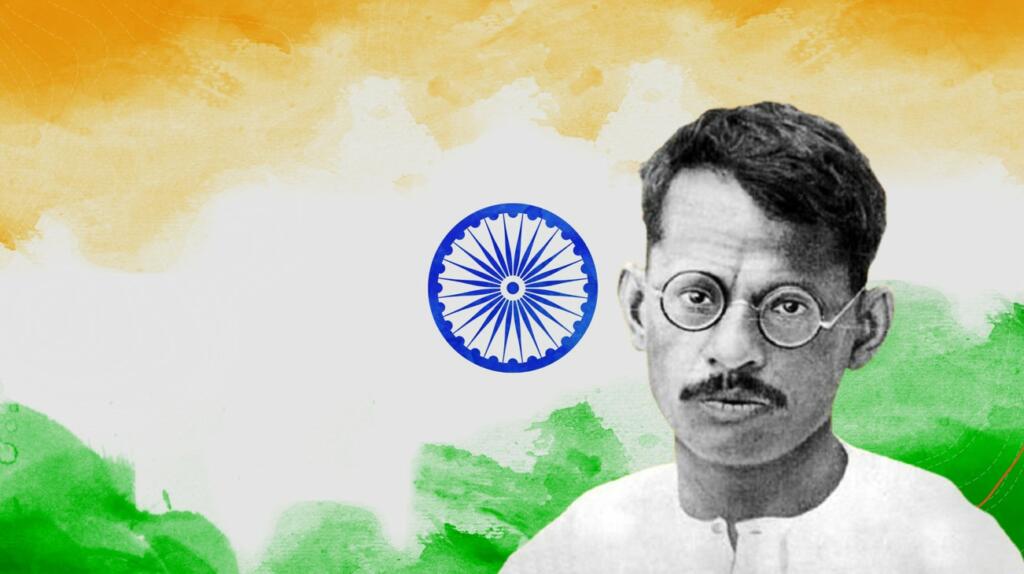In a world where journalists and politicians constantly take sides by claiming to be non-partisan, a deliberately forgotten journalist offers a great insight into the art of neutrality. Having mentored nationalistic revolutionaries like Bhagat Singh and Chandra Shekhar Azad, Ganesh Shankar Vidyarthi was a master of recognising the truth hidden in the web of propaganda.
Ganesh Shankar Vidyarthi-A forgotten hero
Ganesh Shankar Shrivastav, colloquially known as Ganesh Shankar Vidyarthi was born on this day in 1890. An important part of the Indian National Congress, he is credited with being one of the biggest faces of the non-cooperation movement in north India. His father was a teacher and due to the poor salary offered to teachers during those days, he could barely feed his family. Although Ganesh managed to clear his school-leaving examination, he could not continue his formal studies for long due to a lack of resources. As a teenager, he had a deep interest in newspapers. He used to study newspapers like ‘Bharat Mitra’, ‘Bangwasi’ published in those days. He further studied the works of eminent thinkers of his time, including Voltaire, Thoreau, Emerson, John Stuart Mill, Sheikh Saadi, among others. At age 16, he also wrote his first book Hamari Atmogsargart. Ganesh Shankar Vidyarthi was greatly influenced by the national philosophy of Lokmanya Tilak.
However, Ganesh Ji’s real interest was in influencing public opinion through his journalism. Although already left formal education, he had adopted the pen name ‘Vidyarthi(student)’ which later became his identifiable name through journalism. He became an agent of the well-known revolutionary Hindi and Urdu journals – Karamyogi and Swarajya and also began to contribute to them. One of the most respected and oldest journalists of his time Mahabir Prasad Dwivedi offered Vidyarthi Ji the role of sub-editor in his monthly magazine ‘The Saraswati‘ in 1911. Along with this, he also joined the newspaper ‘Abhyudaya‘ of Mahamana Pandit Madan Mohan Malviya.
Journalism and later years of mentorship
Mahamana Pandit Madan Mohan Malviya suggested Ganesh Shankar Vidyarthi publish a magazine, which could spread the ideology of nationalism among the masses. Vidyarthi started publishing a newspaper named ‘Pratap’ on 9th November 1913. In the first issue of this newspaper, he had made it clear that he would fight for his right, for the national independence movement, socio-economic revolution, ethnic pride, literary cultural heritage. Vidyarthi Ji did not confine his struggle for Swaraj to the opposition of the British Raj, but he also fought with feudalism, capitalism within the country. He may continue to play his part in the non-violent movement by becoming an active worker of the Congress, but his real work was to support the revolutionaries. Many revolutionaries had a close friendship with the student. Ganesh Shankar Vidyarthi had a great contribution to the establishment of the Hindustan Republican Association directly or indirectly.
Vidyarthi Ji is also credited with polishing the nationalist fervour in both Chandra Shekhar Azad and Bhagat Singh Ji. Chandra Shekhar Tiwari, who fearlessly took 15 whips for beating a British officer on the head in Varanasi, and instead of screaming, ‘Vande Mataram’ came out from his mouth at every whip. This Chandra Shekhar Tiwari later became world-famous as Chandra Shekhar Azad and Ganeshshankar Vidyarthi had a key role in getting him shelter in Kanpur. Similarly, Bhagat Singh who had left Lahore for Kanpur to fulfil his nationalistic cause was given a separate space in his newspaper by Vidyarthi Ji. Bhagat Singh wrote with the pen name ‘Balwant’ in the newspaper.
Killed by Islamist mob while pacifying them
Unfortunately, the man who kept fighting colonialism, feudalism and other evil isms was killed by communalism. He was secular in the true sense. That’s why when violence erupted against the hanging of Bhagat Singh, Raj Guru and Sukhdev, he toured violence-affected areas to personally counsel the rioters. However, when riots took a communal form, Vidyarthi Ji failed to guide the masses. On 25th March 1931, he went to counsel the Islamists to stop the violence. This did not go down well and he was stabbed to death by the Islamic mob near Chaubey Gola intersection in Kanpur.
Vidyarthi Ji’s life is a great insight into how a journalist should strive to maintain his/her integrity. Today’s journalists who sit in their AC Cabin while lecturing about communalism would not dare to put a foot in the violence-affected area as Vidyarthi Ji did. Along with supporting everyone, he kept providing positive criticism for every wrong step taken by leaders from every section of the independence movement. If that is not neutrality, nothing can be.
